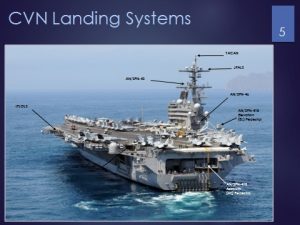 Colonel Wayne R. Scott, USAF (Ret.), was the speaker at our meeting in March. After 29 years of service as an Air Force officer,Wayne joined Raytheon and is now Senior Program Manager, JPAL TSS ATS. Before starting his brief, Wayne introduced his father and mother, Robert and Marilyn; his wife, Cindy; and their good friend Bill Baribault who is the President and CEO of the President Nixon Foundation.
Colonel Wayne R. Scott, USAF (Ret.), was the speaker at our meeting in March. After 29 years of service as an Air Force officer,Wayne joined Raytheon and is now Senior Program Manager, JPAL TSS ATS. Before starting his brief, Wayne introduced his father and mother, Robert and Marilyn; his wife, Cindy; and their good friend Bill Baribault who is the President and CEO of the President Nixon Foundation.
Wayne’s dad was a pilot with VF-31 “Tomcatters” in the early 1950’s and flew off a carrier in the Korean War. After learning of Wayne’s lineage, I was not surprised by his excellent grasp of the challenges presented when landing an aircraft on the moving deck of an aircraft carrier. Wayne’s brief was on the subject of the US Navy ’s Joint Precision Approach and Landing System (JPALS). This system is for use in the F-35 JSF and other unmanned platforms and is testing today. The system is designed to give aircraft returning to the carrier precision guidance back to their landing position regardless of weather conditions, sea state (5 or less) or availability of other outside navigational aids. JPALS is a military aircraft landing system planned to support landing aircraft aboard aircraft carriers and amphibious assault ships. It is GPS-based while current landing systems are radar, radio or visual-based. It is very accurate: typically 50 cm. or better at touchdown.
 After reviewing what JPALS is and does, he educated us on what JPALS is not. JPALS is not a flight controller or an autopilot, it does not send control commands to the aircraft. It is not the same system that is currently being integrated into the fleet for use with F/A-18s. It is not what is called, “Magic Carpet”. At this time, JPALS is being updated to support unmanned aerial vehicles (UAVs). It still provides navigation to the UAV pilot who uses the data to land the aircraft. It is a very accurate system as demonstrated by the videos that Wayne provided.
After reviewing what JPALS is and does, he educated us on what JPALS is not. JPALS is not a flight controller or an autopilot, it does not send control commands to the aircraft. It is not the same system that is currently being integrated into the fleet for use with F/A-18s. It is not what is called, “Magic Carpet”. At this time, JPALS is being updated to support unmanned aerial vehicles (UAVs). It still provides navigation to the UAV pilot who uses the data to land the aircraft. It is a very accurate system as demonstrated by the videos that Wayne provided.
The bullet points on the key features of JPALS from Wayne’s presentation are:
* FMS Community – Exportable
* Interoperable – designed to work in a variety of applications
* Supports hover points for rotary aircraft and SOVLapproach(F-35B)
* Secure/Ant-Spoof/Anti-Jam
* 2-way data link supports surveillance without airport radar
* One system can support all runways/airfields in a 20 NM radius
* Interactive Electronic Technical Manual for maintainers It was an excellent brief by Col Scott and everyone present walked away with a much better understanding of what JPALS is, what it currently provides to the fleet and what it holds for the future of Naval Aviation.
Our speaker’s last slide:
NAVAL AVIATION
So you want to understand an aircraft carrier? Well, just imagine that it’s a busy day, and you shrink San Francisco Airport to only one short runway and one ramp and gate. Make planes take off and land at the same time at half the present time interval, rock the runway from side to side, and require that everyone who leaves in the morning returns that same day. Make sure the equipment is so close to the edge of the envelope that it’s fragile. Then turn off the radar to avoid detection, impose strict controls on radios, fuel the aircraft in place with their engines running, put an enemy in the air, and scatter live bombs and rockets around. Now wet the whole thing down with salt water and oil, and man it with Our speaker’s family and friend join him at Gramps’ March luncheon. L to R: Bill S. Baribauilt, President Nixon Foundation; Robert Scott, Naval aviator(50-54); Wayne Scott, our speaker; Marilyn Scott, Wayne’s mother; Cindy Scott, Wayne’s wife. Dennis Zager(L) is welcomed aboard by Sel Ramsay 20-year-olds, half of whom have never seen an airplane close-up. Oh, and by the way, try not to kill anyone.
By Unknown Senior Office, Air Department



